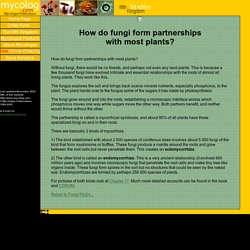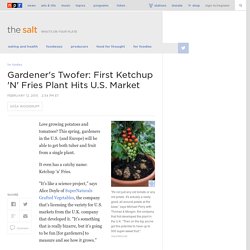

Botany of Desire. Please sign in using one of our supported services to begin saving your favorite programs and videos.

We have updated our registration process. Please sign in using one of our supported services to bookmark your favorite programs and videos. If you have a PBS account, your stored favorites and viewing history will be safely migrated. By signing in, you are authorizing PBS to share your email address with your local PBS station to send you periodic communications about station events, services and support. The Intelligent Plant. In 1973, a book claiming that plants were sentient beings that feel emotions, prefer classical music to rock and roll, and can respond to the unspoken thoughts of humans hundreds of miles away landed on the New York Times best-seller list for nonfiction.

“The Secret Life of Plants,” by Peter Tompkins and Christopher Bird, presented a beguiling mashup of legitimate plant science, quack experiments, and mystical nature worship that captured the public imagination at a time when New Age thinking was seeping into the mainstream. What Plants Talk About ~ Full Episode. Plants Talk AboutA world where plants communicate, co-operate and, sometimes, wage all-out war.2013-04-03 20:00:00publishdisabledshowfalse8234Dodder Vine Sniffs Out Its PreyThe parasitic dodder vine "sniffs" out plants from which it can draw nutrients. 20:00: Self-DefenseTo protect against herbivores, wild tobacco plants deposit sweet but deadly secretions. 20:00: When we think about plants, we don’t often associate a term like “behavior” with them, but experimental plant ecologist JC Cahill wants to change that.

The University of Alberta professor maintains that plants do behave and lead anything but solitary and sedentary lives. What Plants Talk About teaches us all that plants are smarter and much more interactive than we thought! Do you know your fruit from your vegetables? How do fungi form partnerships with most plants? How do fungi form partnerships with most plants?

Without fungi, there would be no forests, and perhaps not even any land plants. This is because a few thousand fungi have evolved intimate and essential relationships with the roots of almost all living plants. They work like this... The fungus explores the soil and brings back scarce mineral nutrients, especially phosphorus, to the plant. The plant hands over to the fungus some of the sugars it has made by photosynthesis. The fungi grow around and into the roots, establishing a microscopic interface across which phosphorus moves one way while sugars move the other way. Food, Medicine, Fibre & Fuel. Plants in Culture - A Sensory Experience. Can Gardening Help Troubled Minds Heal? Women's Correctional Community Center inmate Lilian Hussein checks on ti leaves she planted as part of the prison's farming and gardening program in Kailua, Hawaii.

The green ti leaves are often used to wrap food or weave into leis. Jennifer Sinco Kelleher/AP hide caption itoggle caption Jennifer Sinco Kelleher/AP. Plants Talk. Plants Listen. Here's How : Krulwich Wonders... Plants Know Their Relatives — And Like Them! Unlike many human brothers and sisters, plant siblings appear to do their best to get along, sharing resources and avoiding competition.

In a study of more than 3,000 mustard seedlings, scientists discovered that the young plants recognize their siblings — other plants grown from the seeds of the same momma plant — using chemical cues given off during root growth. And it turns out mustard plants won’t compete with their brethren the way they will with strangers: Instead of rapidly growing roots to suck up as much water and minerals as possible, plants who sensed nearby siblings developed a shallower root system and more intertwined leaves.
The Fate Of The World's Chocolate Depends On This Spot In Rural England. Rows of potted cocoa plants from around the world.

Before a cocoa variety from one country can be planted in another, it first makes a pit stop here, at a quarantine center in rural England. Gardener's Twofer: First Ketchup 'N' Fries Plant Hits U.S. Market. "It's not just any old tomato or any old potato.

It's actually a really good, all-around potato at the base," says Michael Perry with Thomas & Morgan, the company that first developed the plant in the U.K. "Then on the top you've got the potential to have up to 500 super-sweet fruit. " SuperNaturals hide caption itoggle caption SuperNaturals. Earth - Plants talk to each other using an internet of fungus. This Teen Playwright Could Eradicate Hunger. One balmy summer day, the Firesters went on a road trip, their three kids in tow.

Their eldest, 6-year-old Kalia, chattered away in back, spinning a story for her brothers. In the front the adults spoke of adult things. But when they turned around to look at the children, Kalia’s parents saw that she’d been busier than they had thought. The minivan was filled with flocks of palm-sized birds, created from toilet paper. Kalia had spent the past few hours twisting them into shape; an empty cardboard roll sat beside her. This profile is the third in an OZY series on young geniuses. And it’s true.